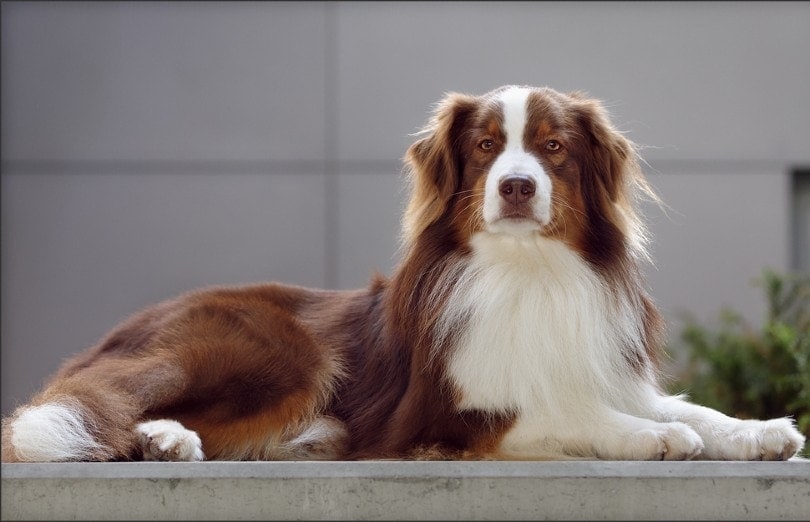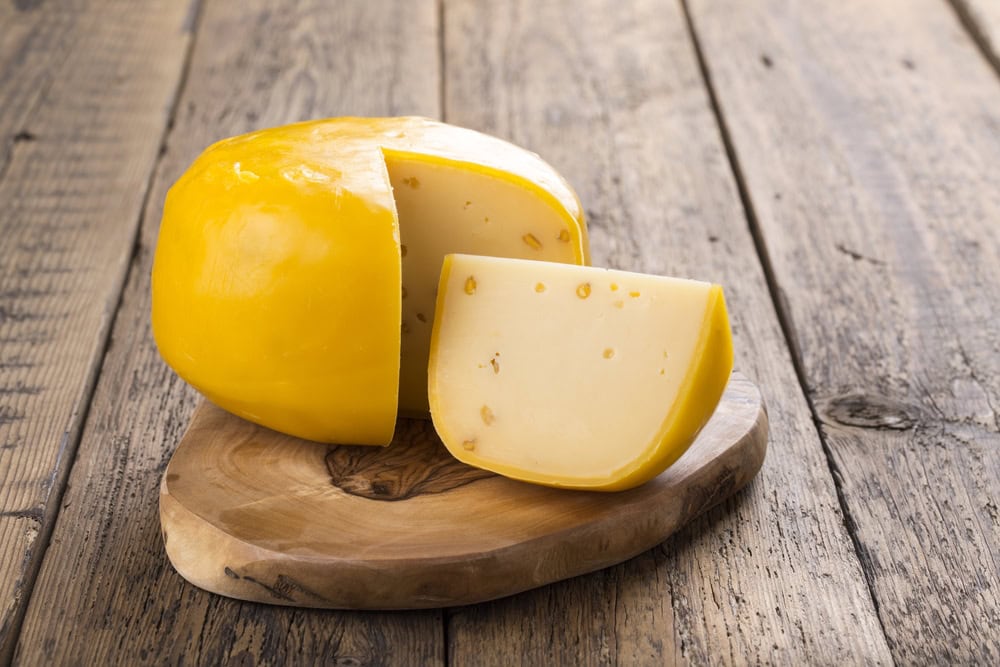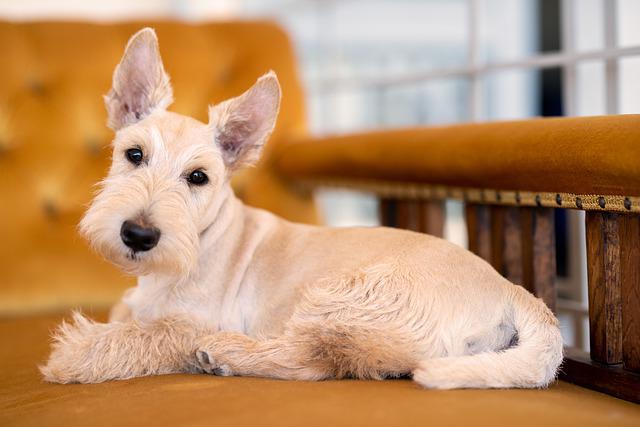Native American Indian Dog: Breed Info, Pictures, Traits & Facts
By Ashley Bates
Updated on
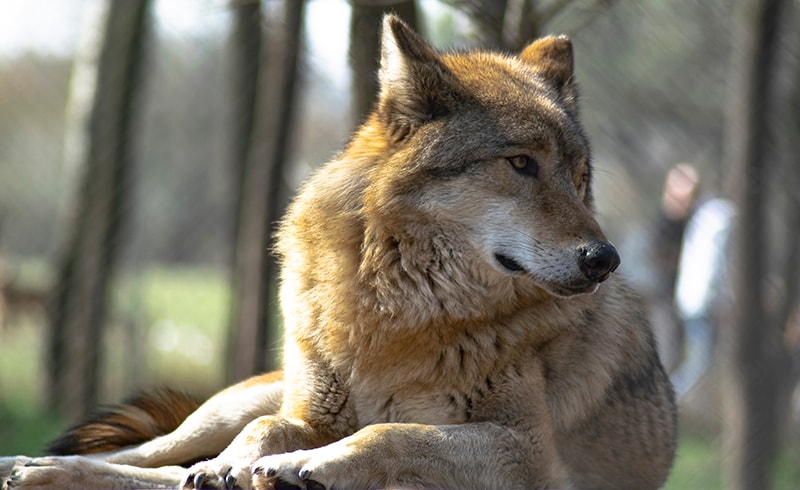
If you don’t know much about the Native American Indian Dog, we’re not surprised. This rare breed is one of rich history, even though they don’t yet grace the list of certified canines in the AKC lineup. However, the association still aims to educate audiences about the breed.
If you enjoy the primal look of a wolf but don’t want to buy a hybrid due to temperament unpredictability, the Native American Indian Dog might be up your alley. We will talk about every aspect of owning one of these pups so you can decide if the breed is right for you.
| Height: | 24–34 inches |
| Weight: | 55–120 pounds |
| Lifespan: | 14–19 years |
| Colors: | Silver, black, gray, brown |
| Suitable for: | Active families, experienced dog owners |
| Temperament: | Protective, pack-oriented, loyal, intelligent |
The Native American Indian Dog is a recreation of the majestic canines that used to join tribes of the original dwellers of the land. These dogs are built to closely resemble wolves and thrive in a pack-minded state, making them incredibly loyal and particularly beautiful.
Just looking at the grand appearance of the NAID, you can see that they genetically resemble wolves. Much the same, they share many of the same traits as their wild ancestors. They require an owner with a deep understanding of the breed, so experience is a must!
Native American Indian Dog Characteristics
Native American Indian Dog Puppies
The Native American Indian Dog is a very rare breed, so they can be very challenging to find. Once you do, you might have to travel pretty far to pick up your puppy. Since there aren’t frequent litters, you might also have to wait several months before a pup becomes available.
If you are looking for an authentic puppy of this breed, broader research is imperative. Many backyard breeders will try to pass off similar dogs as the Native American Indian Dog. Always ask for vet records, genetic information about parents, and a laundry list of other questions to ensure authenticity.
On average, you can expect to pay between $1,500 to $2,000 for one of these dogs. Many breeders require potential buyers to put down a deposit to ensure they receive the puppy they want. They also put puppy contracts in place to ensure that if you’re unable to care for the animal, the dog will return to the breeder.
It is incredibly rare, if not impossible, to find a Native American Indian Dog at a rescue or shelter. But if you do, all vetting, including spay and neuter surgery and microchipping, should be complete. Depending on the organization, you can expect to pay between $150 to $450.
Temperament & Intelligence of the Native American Indian Dog
The Native American Indian Dog is an absolutely brilliant canine. They are well revered for their incredible intelligence and highly trainable demeanors. Because they are incredibly strong-spirited, they need a very confident leader who can establish a hierarchy.
Since these dogs require such specific mental stimulation, they require owners who can work with them daily. It is important to keep up with their chosen favorite toys and other play items so that they will have enough things to keep them busy.
This breed can be very wary of strangers. It’s essential to socialize them early so you can take them to train in public places such as parks, activity centers, and doggy parks.
If this breed gets bored, it can lead to destructive behaviors, much like other similar canines. To avoid this, ensuring they have company during the day and many activities for mental and physical stimulation is crucial to keep them positively active.
Are These Dogs Good for Families? 👪
Because these dogs have an incredible pack mentality, they make excellent additions to single owners, growing families, and all in between. They are loyal and devoted to a fault.
Due to their size and difficulty during their early years, they might not make the best candidates for older adults or those with disabilities. Also, due to their size and exercise requirements, they do not make good candidates for an apartment or inner-city living.
Because these dogs are so social with the members of their pack, it can be very damaging to leave them alone for long periods. This isn’t the best breed if you work long hours with no one home during the day.
Boredom and loneliness can lead to many different unwanted behaviors, such as destructive tendencies and separation anxiety.
However, if you have acres or a large fence in the backyard where they can stretch their legs, the NAID will thrive.
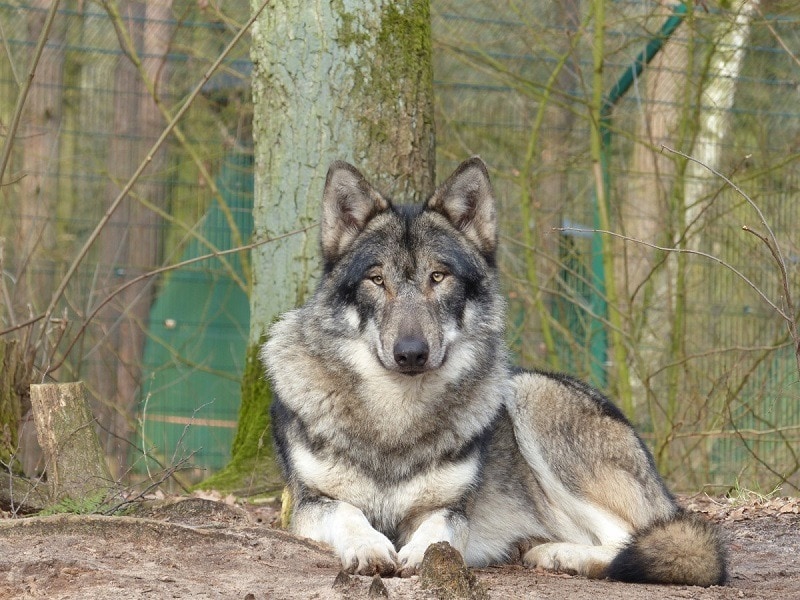
Does This Breed Get Along With Other Pets?
If your Native American Indian Dog is well-socialized from a young age, they can get along exceptionally well with other canines. However, due to their prey drive and natural instincts, they might never do well with smaller animals. Discretion is undoubtedly advised and should be judged on a case-by-case basis.
Some of these dogs might show territorial tendencies or same-sex aggression with other dogs. This only happens sometimes. However, if they aren’t properly socialized as puppies, it can cause issues later. Also, once the hormones kick in, it can cause challenges with authority within the pack.
So always make sure to purchase one of these dogs from a reputable breeder and socialize them as early as you can. If this breed is raised around cats, they will likely get along with their own roommates but might not extend that same compassion for strange cats in the neighborhood.
Things to Know When Owning a Native American Indian Dog
Food & Diet Requirements 🦴
Your NAID will need a high-quality, protein-rich diet that nourishes the muscles and mind. These dogs will burn off quite a lot of calories within a day and need sustenance to replenish their bodies.
The pet food industry is changing all the time. While dry kibble is still a very healthy option for our canine friends, other more appetizing and convenient options are surfacing as well. Replacing many wet canned foods, fresh foods are hot on the market.
These recipes are typically from companies that offer subscription-based services. These dog foods are designed to match the needs of each individual canine, including portion control. So, it is specially tailored to match your dog and is shipped directly to your home on a timed basis without any work on your part.
Fresh food options are often healthier, but they can be significantly more expensive. Some families choose to use a combination of dry dog food and fresh food to reap the benefits of both diet types and stretch the dollar.
Some families also choose to make homemade diets for their dogs. The Native American Indian Dog will find the meals you cook up quite appetizing, and it can be an excellent way to control what is in your dog’s food bowl.
However, with any diet decision, you should always check with your veterinarian to ensure you are creating the perfect recipe for optimal health.
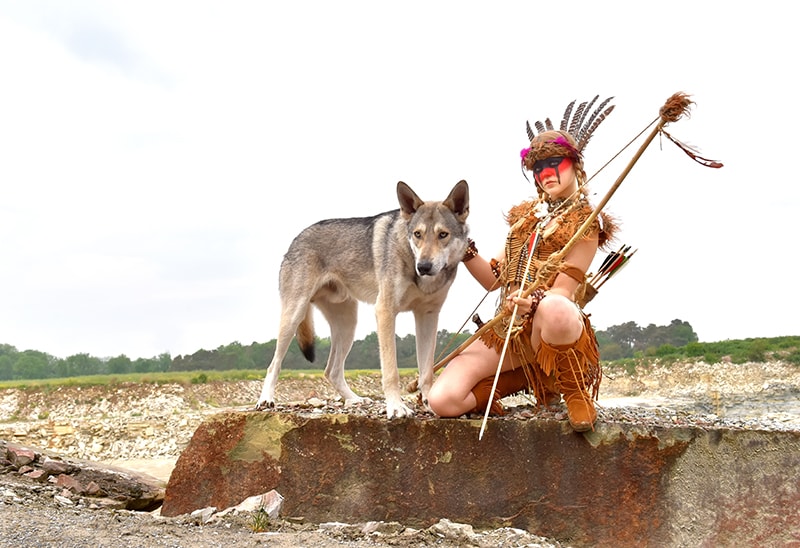
Exercise 🐕
The Native American Indian Dog requires a minimum of one hour of exercise per day. Because of their size and overall needs, they require a lot of land to roam or a large fenced-in yard to keep them safe and secure.
This breed is certainly easy to keep occupied. They will gleefully join you in any activity. If you love to get out of the house to go hiking or check out shops downtown, your pal can definitely tag along.
Depending on the individual dog’s temperament, you can also exercise your NAID at a local dog park or other gathering place. Many dog parks have agility equipment, and your pup will absolutely love exploring and learning the ropes.
Training 🎾
Training a Native American Indian Dog right can be challenging because they are so intelligent. They will sometimes try to become the alpha in the situation. It is vital to start training early to avoid these dominant behaviors.
It is crucial to have a firm hand and consistency while teaching. If you train properly, these dogs will succeed in any elected task. They can be absolutely fabulous service animals, workers, or guardians.
The fact here is that this dog will only be trained as proficiently as the trainer is. So, this breed could benefit from professional guidance if you don’t have the required experience.
The fun thing about looking for a professional is that it will help you and your dog develop a human-canine companion relationship full of respect and obedience.
Grooming ✂️
This breed will shed lightly year-round. However, since they are a double-coated breed, they will experience seasonal blowouts in the spring and fall months. When seasons change, their coats undergo a purge to get rid of the old coat and replenish it with a new one.
This particular dog benefits from brushing a few times a week to take care of light shedding. Since they are double-coated, they will have blowouts twice a year, where they lose their winter and summer coats to make way for new growth.
However, these dogs are hypoallergenic! So, if you have an allergy sufferer in your home—no worries, all this hair won’t bother you a bit.
In addition to brushing, you should bathe your NAID once every 4 to 6 weeks. It would help if you always used a fragrance-free conditioning shampoo to keep their fur fresh and lovely.
In addition to bathing and brushing, you can also keep up with regular nail trims, toothbrushing, and ear cleaning.
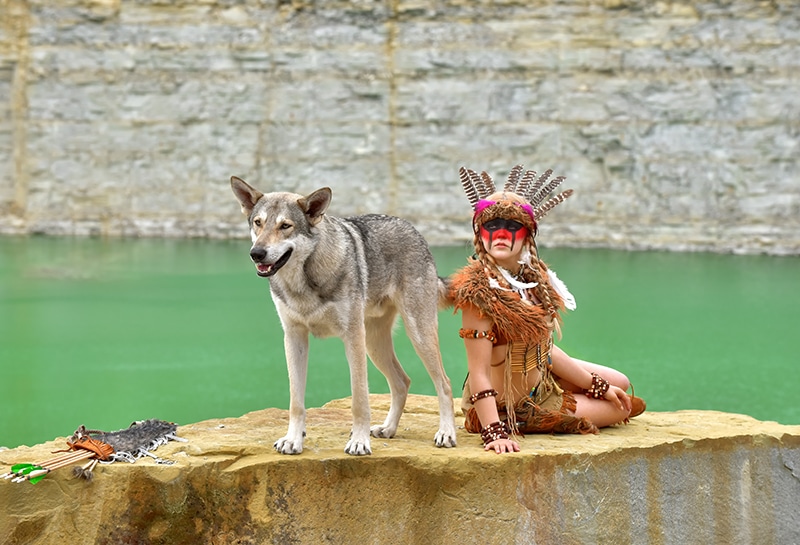
Health and Conditions 🏥
The Native American Indian Dog has great health with proper breeding. In fact, they tend to be much healthier than some more common breeds. So, you can potentially cut your vet bills down just by choosing this breed.
It would be best to keep up with regular vetting—ensure your NAID is up to date on vaccines, get them spayed or neutered on time, and maintain parasite control. Even though health factors can be environmental, most genetic problems are non-existent.
As a precaution, you can always implement pet insurance to cover illness and emergencies. After all, certain unexpected accidents may happen that still require veterinary care and can be very pricey to treat.
- Age-induced arthritis
- Hip dysplasia
Male vs Female
The Native American Indian Dog is a massive breed. However, as with most dogs, the males tend to be noticeably larger than the females, with stockier bodies and heavier muscle mass. The females tend to be leaner and more petite in composition.
As far as personality is concerned, it isn’t really based on gender. However, females are more likely to exhibit same-sex aggression, whereas males are sometimes worse with territorial aggression with strange canines and even sometimes strangers.
Early spay and neutering can improve or make it less likely for any aggression to develop in the breed.
3 Little-Known Facts About The Native American Indian Dog
1. Though not recognized by the AKC, these dogs have their own registries.
While the AKC has given education and recognition of the Native American Indian Dog, they have not labeled them as a pure breed. However, they are recognized as such by the Native American Indian Dog Registry, the National Kennel Club, and the Dog Registry of America.
2. Breed origins of the Native American Indian Dog are not defined.
While we know that the breed was recreated to mimic the original dogs kept by Native peoples, this dog has muddied origins. We only know that the indigenous dogs were used as herders, guardians, and trackers. The original bloodlines are long extinct, but we have a fabulously close rendition.
3. Native American Indian Dogs are hypoallergenic.
This breed is double-coated, probably making allergy sufferers run the other way. However, interestingly enough, the Native American Indian dog is a hypoallergenic breed. Even though there’s no such thing as a dog that is 100% hypoallergenic, these dogs are about as close as you can get.
Final Thoughts
Now that you have the full 411 on the Native American Indian Dog, what do you think? Do you have the experience levels, living circumstances, and lifestyle to keep up with this beautiful breed?
Remember, this particular double-coated breed is hypoallergenic, so it’s perfect for homes with allergy sufferers. If you love similar breeds like German Shepherds, wolf hybrids, or Alaskan Malamutes, but you can’t handle the hair, this particular breed is an ideal choice.
Remember that the Native American Indian Dog is much rarer than many others. Check for local breeders but understand that traveling or shipping may require you to obtain one of these adorable puppies.
- You might be also interested in: Indian Pariah Dog: Info, Pictures, Facts & Traits
Featured Image Credit to: Ungvari Roland, Shutterstock




